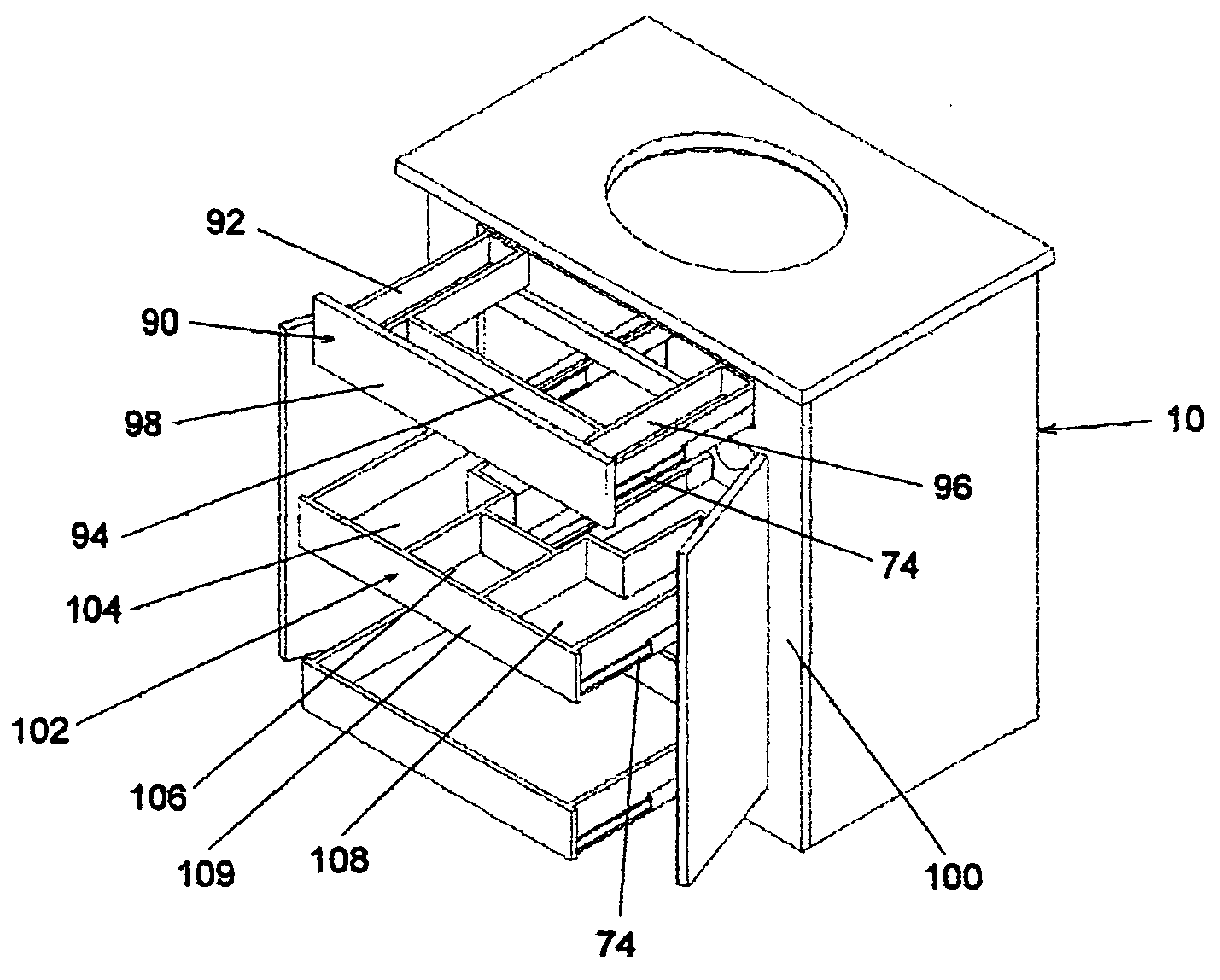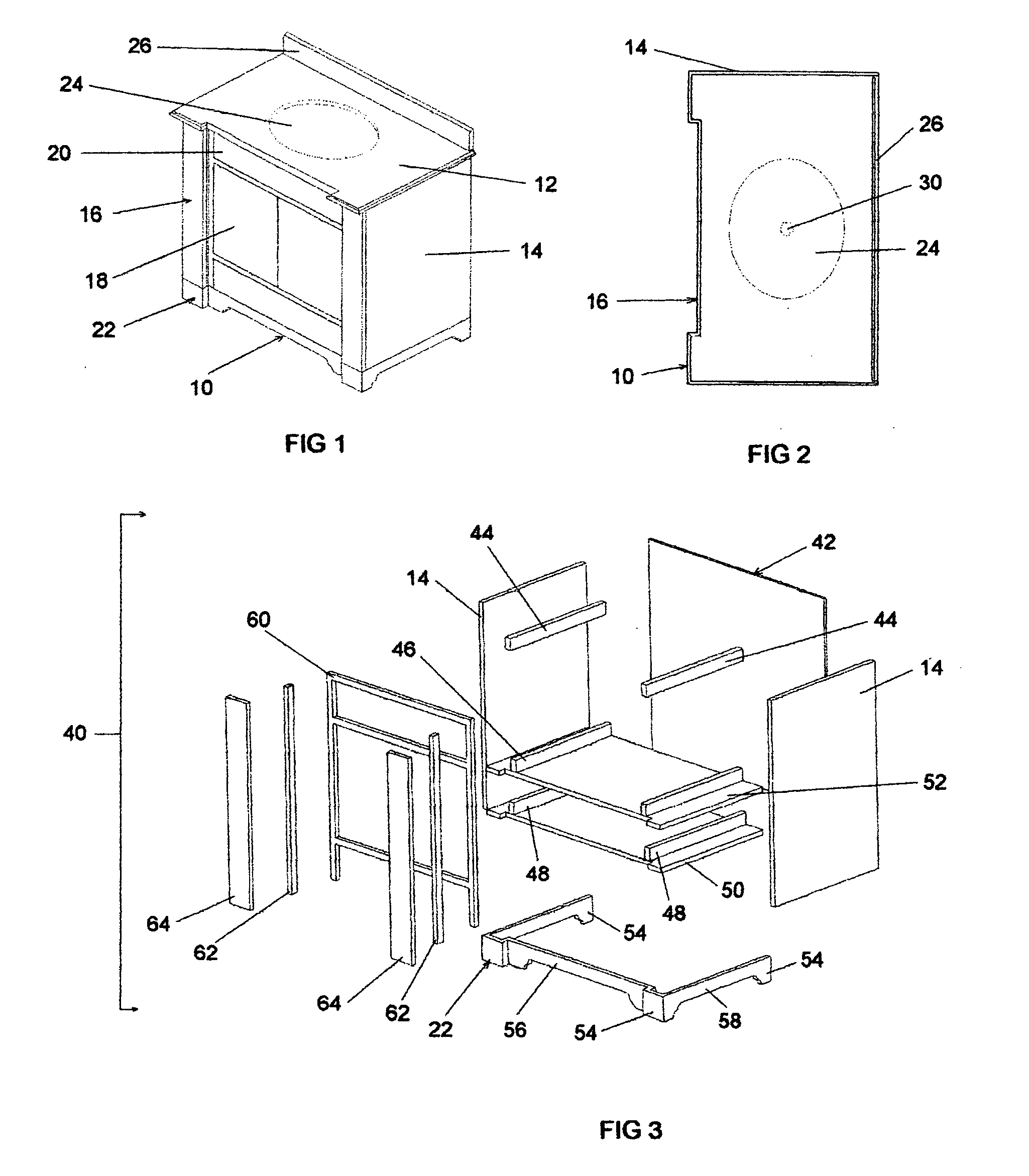Vanity cabinet with drawers
- Summary
- Abstract
- Description
- Claims
- Application Information
AI Technical Summary
Benefits of technology
Problems solved by technology
Method used
Image
Examples
Embodiment Construction
[0039] A vanity cabinet 10 in accordance with the present invention is shown in FIG. 1 with a top 12, sidewalls 14, front 16, doors 18, top drawer 20, base 22, lavatory 24 and backsplash 26. Further, in FIG. 2, the vanity cabinet includes a lavatory with a drain 30.
[0040] As shown in FIG. 3, a carcass for a vanity cabinet is comprised of generally a cabinet body 40, with cabinet back 42, top drawer stringers 44, middle drawer stringers 46, and bottom drawer stringers 48. Also included are the cabinet bottom 50, middle stringer bottom 52 which are both located interior to the carcass as a whole.
[0041] Other components of the cabinet body 40 are the cabinet feet 54, the toe rail 56, the side rails 58, the face frame 60, the molding 62 and the front fascia 64.
[0042] Turning now to FIG. 4, a portion of the vanity cabinet 10 is shown with a drawer of the present invention. The vanity cabinet is shown partially for purposes of clarity. In this instance, the top drawer 20 is shown in th...
PUM
 Login to View More
Login to View More Abstract
Description
Claims
Application Information
 Login to View More
Login to View More - R&D
- Intellectual Property
- Life Sciences
- Materials
- Tech Scout
- Unparalleled Data Quality
- Higher Quality Content
- 60% Fewer Hallucinations
Browse by: Latest US Patents, China's latest patents, Technical Efficacy Thesaurus, Application Domain, Technology Topic, Popular Technical Reports.
© 2025 PatSnap. All rights reserved.Legal|Privacy policy|Modern Slavery Act Transparency Statement|Sitemap|About US| Contact US: help@patsnap.com



